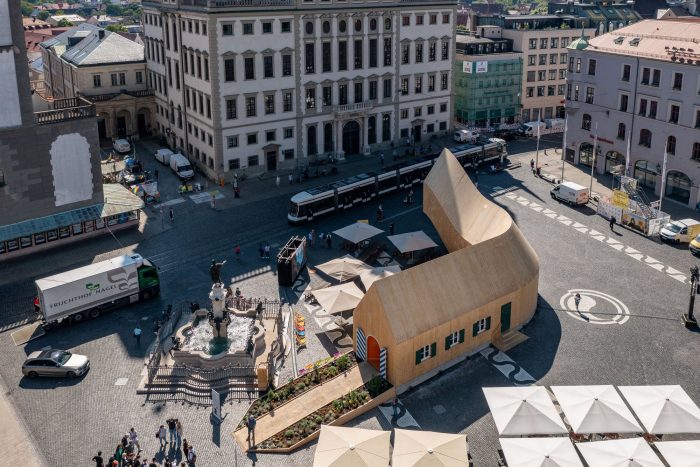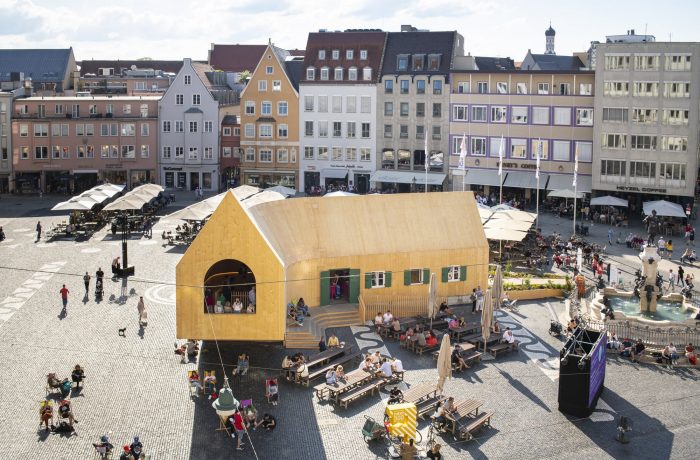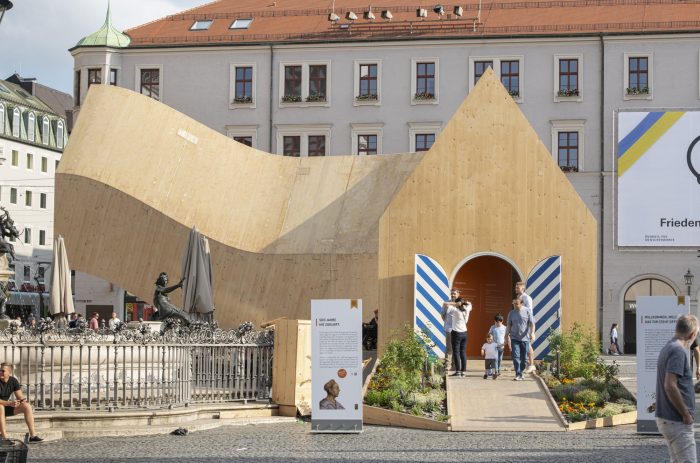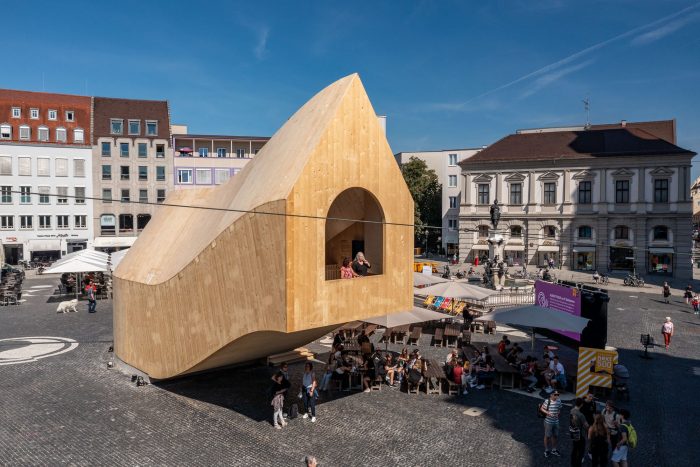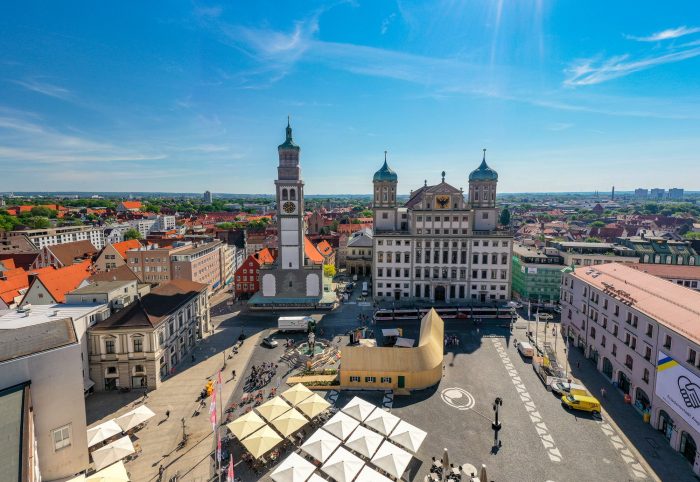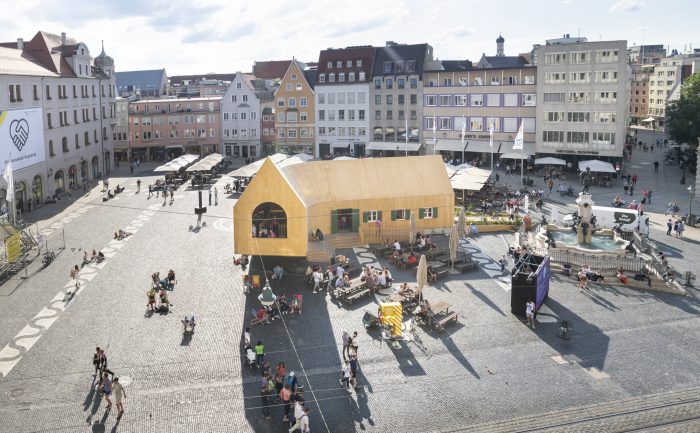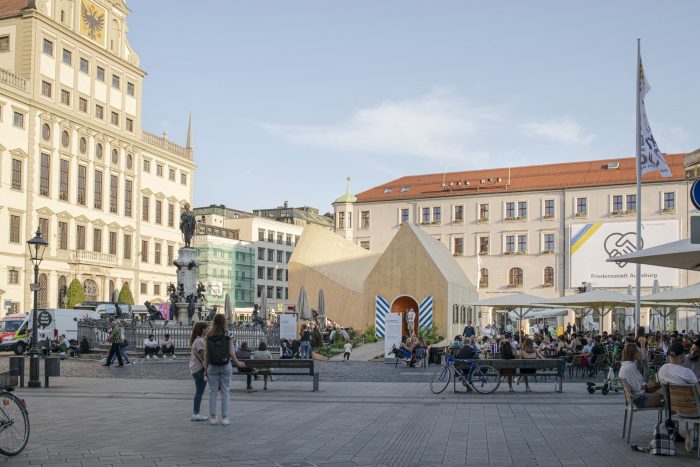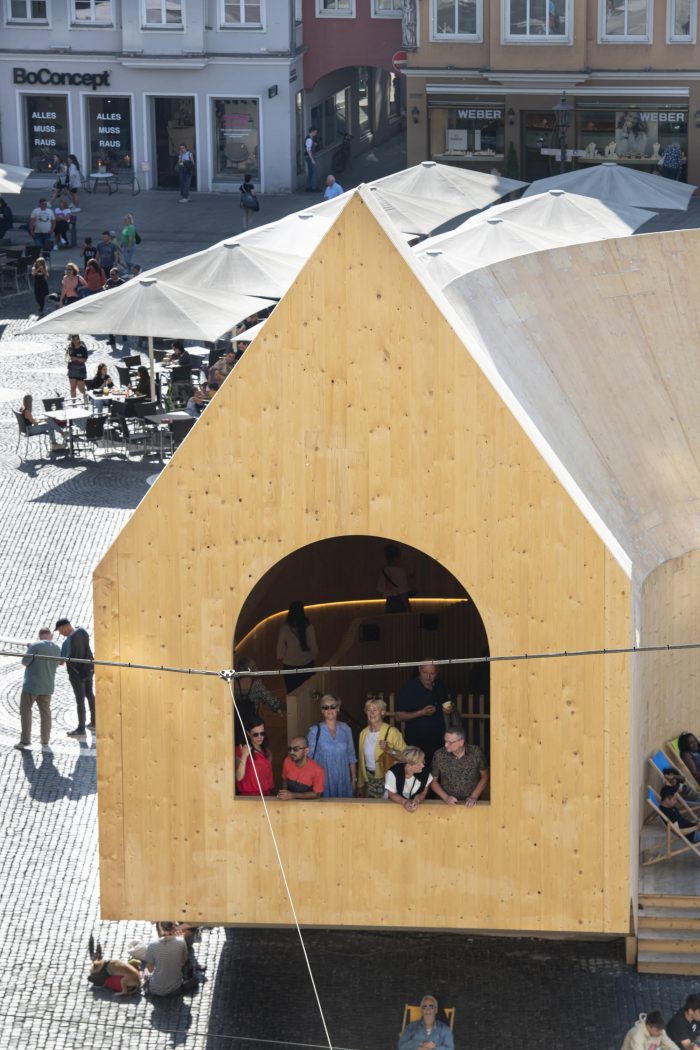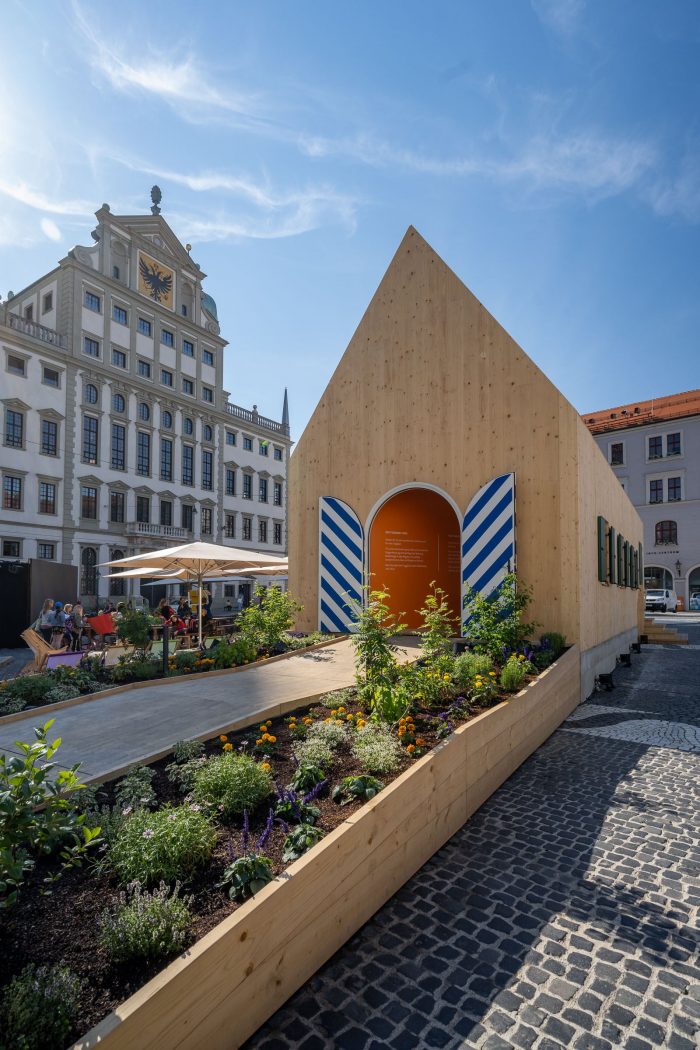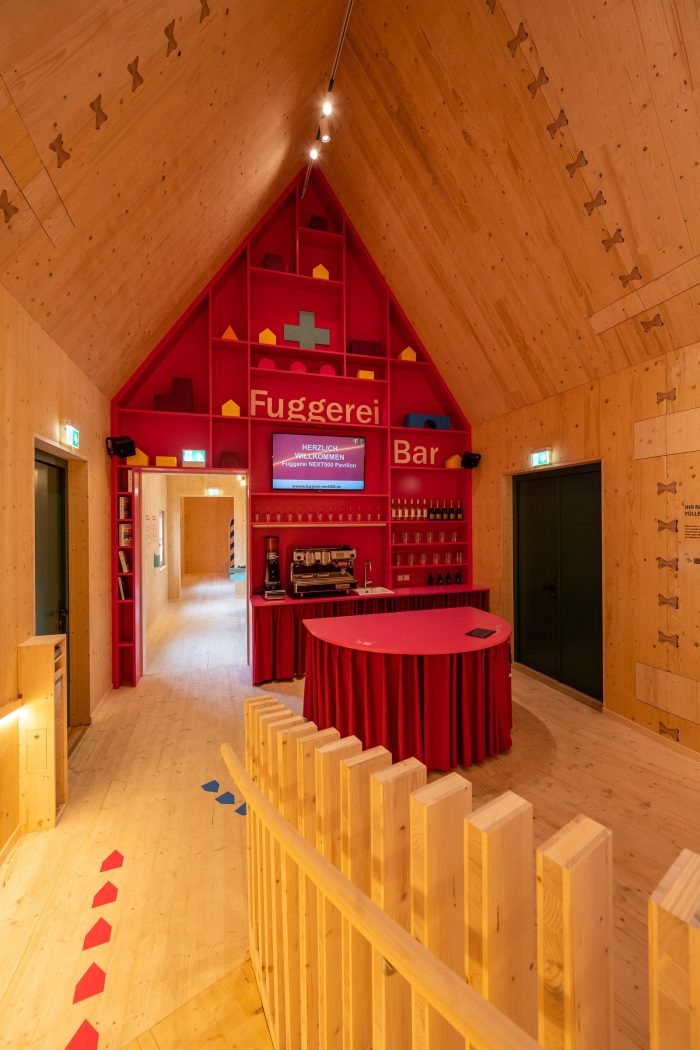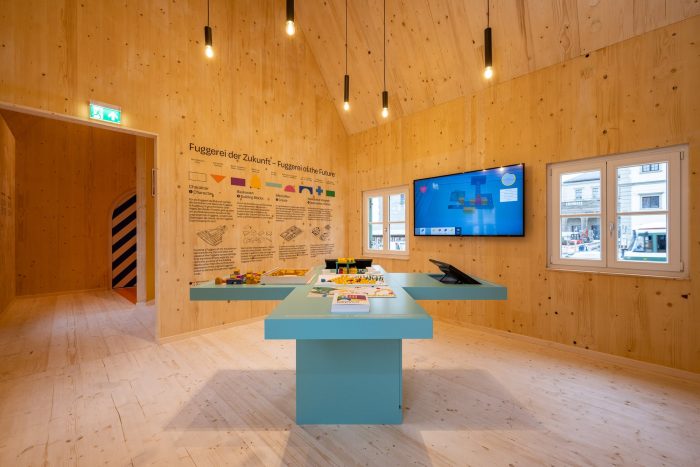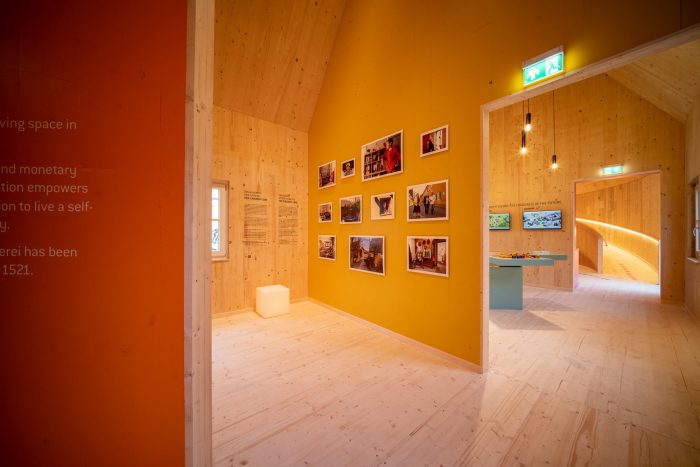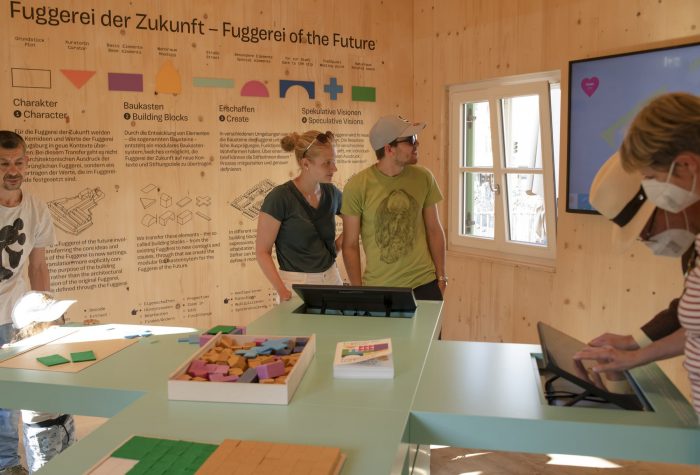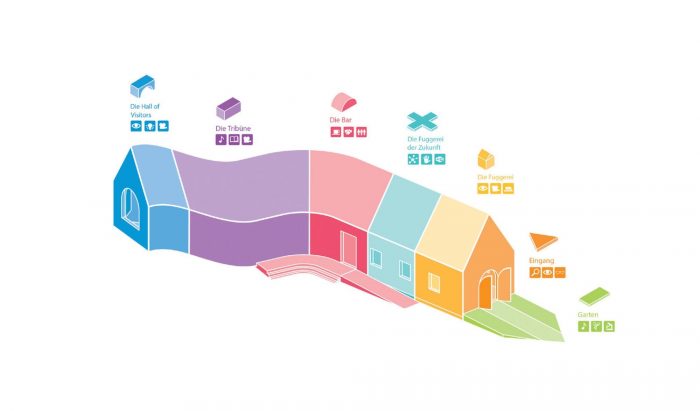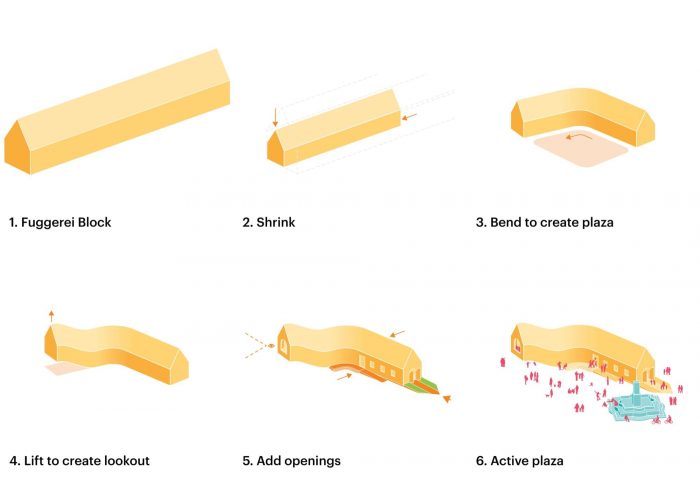奥格斯堡的Fuggerei是世界上最古老的社会住房建筑群。为庆祝其成立500周年,福格基金会发起了一场关于住房问题的跨学科辩论,最终提出了关于未来社会住房的 “福格准则”,并为世界各地的未来福格园进行了一系列研究。位于Fuggerei家乡奥格斯堡市政厅外的Next500展馆,是这场辩论和项目的中心。
The Fuggerei in Augsburg is the world’s oldest social housing complex. In celebration of their 500th anniversary, the Fugger Foundations initiated an interdisciplinary debate on the topic of housing, culminating in the presentation of a “Fuggerei Code” for the future of social housing, alongside a series of studies for future Fuggereien around the world. The Next500 Pavilion, outside the town hall in the Fuggerei’s home city of Augsburg, is the epicenter of this debate and program.
该馆是一个狭长的坡屋顶建筑,其形式受到Fuggerei本身的长条形房屋的启发。然而,展馆的一端并不是单一的方形建筑,而是弯曲并抬高的,以暗示其在奥格斯堡和世界各地展望未来的Fuggereien的作用。这个被抬起的一端形成了一个8.5米的悬臂,为市政厅本身提供了一个观望点。由于弯曲的形状,市政厅广场的一部分被封闭在亭子和邻近的奥古斯都喷泉之间,创造了一个适合各种活动的亲密广场。
The pavilion is a long, narrow, gabled building, its form inspired by the long terraced houses of the Fuggerei itself. However, rather than a single square block, one end of the pavilion is curved and raised up to suggest its role in looking out to the future Fuggereien, both in Augsburg and around the world. This lifted end forms an 8.5-meter cantilever that provides a lookout point to view the town hall itself. Thanks to the curved shape, a part of the town hall square is enclosed between the pavilion and the adjacent Augustus Fountain, creating an intimate plaza suitable for a variety of events.
在内部,展馆被分割成各种房间,用于展览和活动。这些房间也参考了 “Fuggerei of the Future “研究中确定的建筑模块。这包括一个聚会点,游客们在这里一起设计未来的Fuggerei,一个粉红色的酒吧,以满足庆典活动的需要,以及一个安置在高处的护民官,可以举办讲座、演讲和其他活动。
Inside, the pavilion is split into various rooms for the exhibition and events. These rooms also refer to the building blocks identified in the Fuggerei of the Future study. This includes a meeting point where visitors come together to design the Fuggerei of the Future, a pink bar to cater to the festivities, and a tribune housed in the raised end which can host lectures, presentations, and other events.
墙壁、地板和屋顶是由预制的交叉层压木板建造的,这种方法提供了许多可持续发展的好处:木材可以储存碳,而CLT板使展馆可以拆卸,以便以后可以解体和重新安置 – 确保它在展览结束后可以在可持续发展或社会背景下有第二次生命。此外,木材来自Fuggerei自己的森林,一个当地的木匠创造了木制内饰。
The walls, floor, and roof are built from prefabricated cross-laminated timber panels, an approach that offers a number of sustainability benefits: the wood stores carbon, while the CLT panels make the pavilion demountable so that it can later be deconstructed and relocated – ensuring it can have a second life within a sustainable or social context after the conclusion of the exhibition. In addition, the wood is sourced from Fuggerei’s own forests, and a local carpenter created the wooden interiors.
Architects: MVRDV
Area : 150 m²
Year : 2022
Photographs :Eckhart Matthäus, Saskia Wehler
Structural Engineer : Züblin Timber
Main Contractor : Züblin Timber
Founding Partner In Charge : Jacob van Rijs
Director : Sven Thorissen
Design Team : Christine Sohar, Marta Iglesias Rando, Alexander Forsch, Alessio Palmieri, John Hermansson
Strategy And Development : Jan Knikker
Visualizations : Antonio Luca Coco, Francesco Vitale
Carpenter : Burghart GmbH Schreinerei
City : Augsburg
Country : Germany


